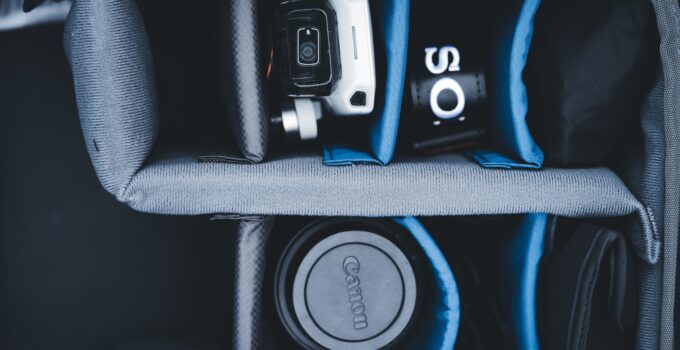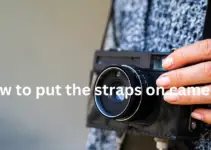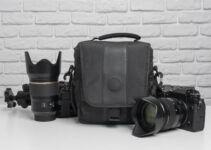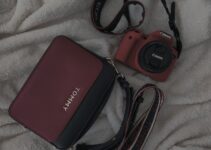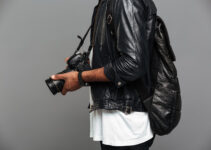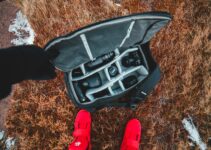Are you an avid photographer struggling to keep your Nikon camera bag organized? But how to best arrange a Nikon camera bag? Don’t worry, you’re not alone. Many photography enthusiasts face the challenge of efficiently arranging their camera gear within a limited space.
The problem often arises when trying to fit multiple lenses, accessories, and other equipment in a compact bag without risking damage or disorganization. Here check out how to configure Tamrac camera bag.

However, fret not! In this article, we will explore practical tips and strategies to help you maximize the storage capacity of your Nikon camera bag while ensuring easy access to all your essentials.
Say goodbye to messy bags and hello to a well-organized photography experience!
Assessing Your Gear
Before arranging your camera bag, it’s important to assess the equipment you plan to carry.
Take an inventory of your camera bodies, lenses, accessories, and any additional gear you may need for your photography outings. This assessment will help you determine the size and type of camera bag required to accommodate your specific gear.
7 instant steps to best arrange a Nikon camera bag
Arranging a Nikon camera bag efficiently and effectively requires careful consideration of the equipment and accessories you want to carry. Here are seven steps to help you organize your Nikon camera bag:
Thus here check out how to install the velcro tab in the focus camera bag.
Step 1: Empty the Bag
Start by emptying the camera bag completely. This allows you to begin with a clean slate and visualize the available space.
Step 2: Sort Your Equipment
Gather all your Nikon camera equipment, including the camera body, lenses, flashes, batteries, memory cards, filters, and any other accessories you typically use. Sort them into categories, such as camera body, lenses, accessories, and miscellaneous items.
Step 3: Prioritize Essential Items
Identify the essential items you need to have quick access to. These typically include your camera body, a couple of frequently used lenses, and memory cards. Place them in easily accessible compartments or pockets within the bag.

Step 4: Utilize Dividers and Compartments
Most Nikon camera bags come with adjustable dividers and compartments. Utilize these to create separate sections for different items. Place the camera body and lenses vertically to maximize space and prevent them from bumping into each other.
Thus here, check out what to carry in a camera bag.
Step 5: Protect and Secure Your Equipment
Consider using protective pouches or wraps for individual items to protect your Nikon camera and lenses from scratches or damage. This helps to keep them safe and organized within the bag.
Step 6: Consider Weight Distribution
Distribute the weight evenly throughout the bag to avoid putting excessive strain on one side. Place heavier items towards the center and bottom of the bag, closer to your body. This ensures better balance and reduces discomfort while carrying the bag.
Step 7: Optimize Outer Pockets
Utilize the outer pockets of your Nikon camera bag for storing smaller accessories like lens caps, cleaning kits, remote controls, or cables.
You can quickly access these items without rummaging through the main compartment.
Selecting the Right Camera Bag
Choosing the right camera bag is essential for proper organization. Consider factors such as size, durability, padding, and ease of access when selecting your bag.
There are various types available, including backpacks, shoulder bags, and rolling cases.

Assess your needs and select a bag that provides ample protection and comfort while suiting your personal style.
Organizing Camera Bodies and Lenses
When arranging your camera bag, start by placing your camera bodies in dedicated compartments or pouches. Ensure they are securely fastened and won’t move around during transport.
For lenses, use padded dividers or lens cases to keep them protected and easily accessible. Consider arranging them in order of focal length or frequency of use for convenience.
Here look up how long does a camera need to be in the bag to acclimate.
Protecting Fragile Equipment
Protective cases or pouches are used to safeguard fragile equipment, such as filters and delicate accessories. These cases will prevent scratches, dents, or accidental damage.
Additionally, consider using lens caps and camera body covers to protect your gear from dust and moisture.
Managing Cables and Accessories
Cables and accessories like chargers, remote shutter releases, and memory card readers can easily get tangled or misplaced. To avoid this, utilize cable organizers or small pouches to keep them neatly arranged. Consider labeling cables for quick identification and to save time during setup.
Utilizing Storage Compartments
Most camera bags offer various storage compartments. Take advantage of these spaces to organize smaller items such as lens filters, lens hoods, lens cleaning kits, and spare batteries. Utilize zippered pockets or mesh compartments to keep everything in order and prevent items from shifting around.
Securing Memory Cards and Batteries
Memory cards and batteries are vital for any photographer. Keep them in secure, dedicated slots or pouches within your camera bag. Ensure they are easily accessible and protected from damage. Consider using memory card cases or sleeves to prevent loss or damage to your valuable photos.
Arranging Filters and Cleaning Tools
Filters are essential for enhancing your photography. Store them in protective cases or pouches to prevent scratches and dust accumulation.
Keep your lens cleaning tools, such as lens pens and microfiber cloths, easily accessible for quick maintenance and cleaning on the go.
Prioritizing Essential Items
When arranging your Nikon camera bag, prioritize the items you use most frequently. Place them in easily accessible compartments or pockets for quick retrieval.
This includes your primary camera body, commonly used lenses, and accessories required for your typical photography sessions.
Maintaining a Lightweight Bag
While it’s important to have all your essential gear with you, it’s equally crucial to maintain a lightweight camera bag. Consider the weight of each item you plan to carry and evaluate its necessity.

Minimize redundant or seldom-used equipment to reduce the strain on your shoulders and ensure greater mobility during your photography outings.
Customizing Your Camera Bag
Every photographer has unique preferences and shooting styles. Customize your camera bag to suit your specific needs. Padded inserts or dividers can create compartments tailored to your gear.
This allows for a personalized arrangement that optimizes organization and protects your equipment effectively.
5 Tips for On-the-Go Photography
Efficiency is key when you’re out and about, capturing amazing moments. Here are a few tips for organizing your camera bag for on-the-go photography:
- Keep your camera body with a lens attached for quick access and spontaneous shots.
- Utilize side pockets or external pouches for items you may need to reach quickly, such as lens caps, filters, or a small tripod.
- Consider using a camera strap that allows you to carry an additional lens, making lens changes more convenient.
- Keep a small notebook and pen in your camera bag for jotting down settings, locations, or creative ideas.
- Have a designated pocket for your smartphone, ensuring easy access for photo sharing or using photography-related apps.
Ensuring Proper Weight Distribution
When arranging your camera bag, pay attention to weight distribution. Place heavier items closer to your back for better balance and reduced strain. Distributing the weight evenly will provide more comfort during long hours of shooting and hiking.
FAQs (Frequently Asked Questions)
How do I choose the right camera bag size?
To choose the right camera bag size, consider the amount and type of gear you regularly carry. Assess the dimensions of your camera bodies, lenses, and accessories and ensure the bag offers enough space without being too bulky.
Should I invest in a waterproof camera bag?
Investing in a waterproof camera bag is highly recommended, especially if you frequently shoot in challenging weather conditions or near water bodies. It provides an extra layer of protection against moisture and keeps your equipment safe.
How often should I clean my camera bag?
Regularly cleaning your camera bag is essential to remove dust, debris, and any spills that may occur. Aim to clean it at least once every few months or more frequently if you encounter particularly dirty or dusty environments.
Can I use any bag as a camera bag?
While it’s possible to use any camera bag, investing in a dedicated camera bag designed specifically for photography gear is recommended.
These bags offer padded compartments, dividers, and additional features that provide better protection and organization for your equipment.
Conclusion
Efficiently arranging your Nikon camera bag is essential for protecting your gear, ensuring easy access, and maintaining a smooth workflow during your photography adventures.
By following the steps outlined in this article, you can optimize the organization of your camera bag and enhance your overall photography experience.

